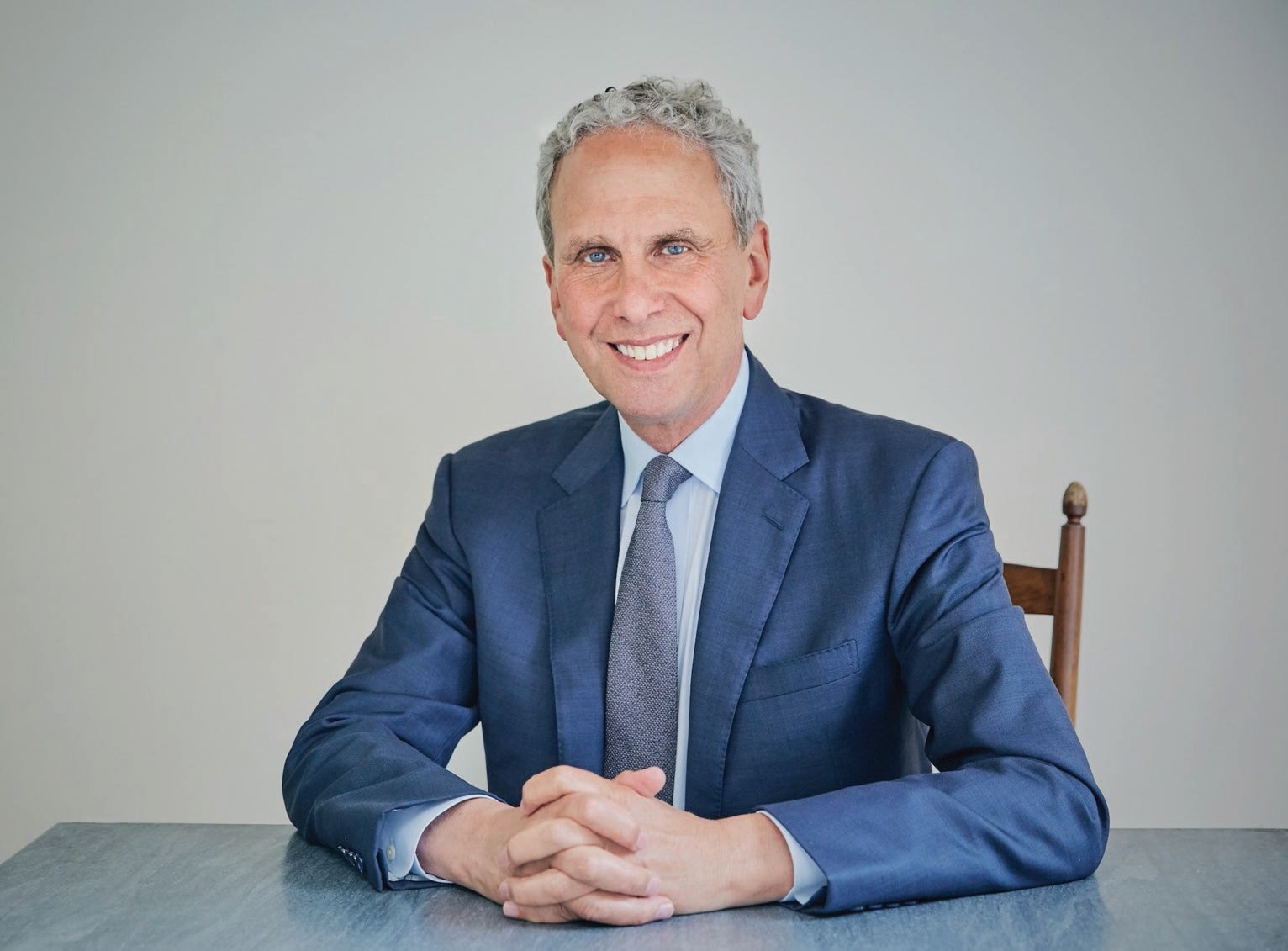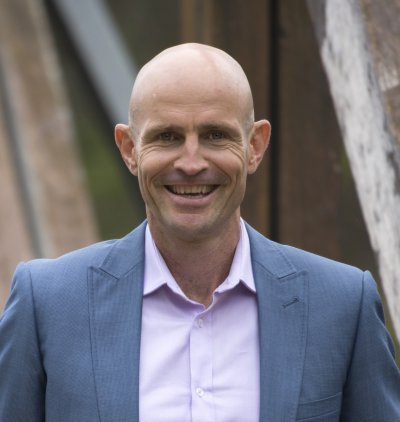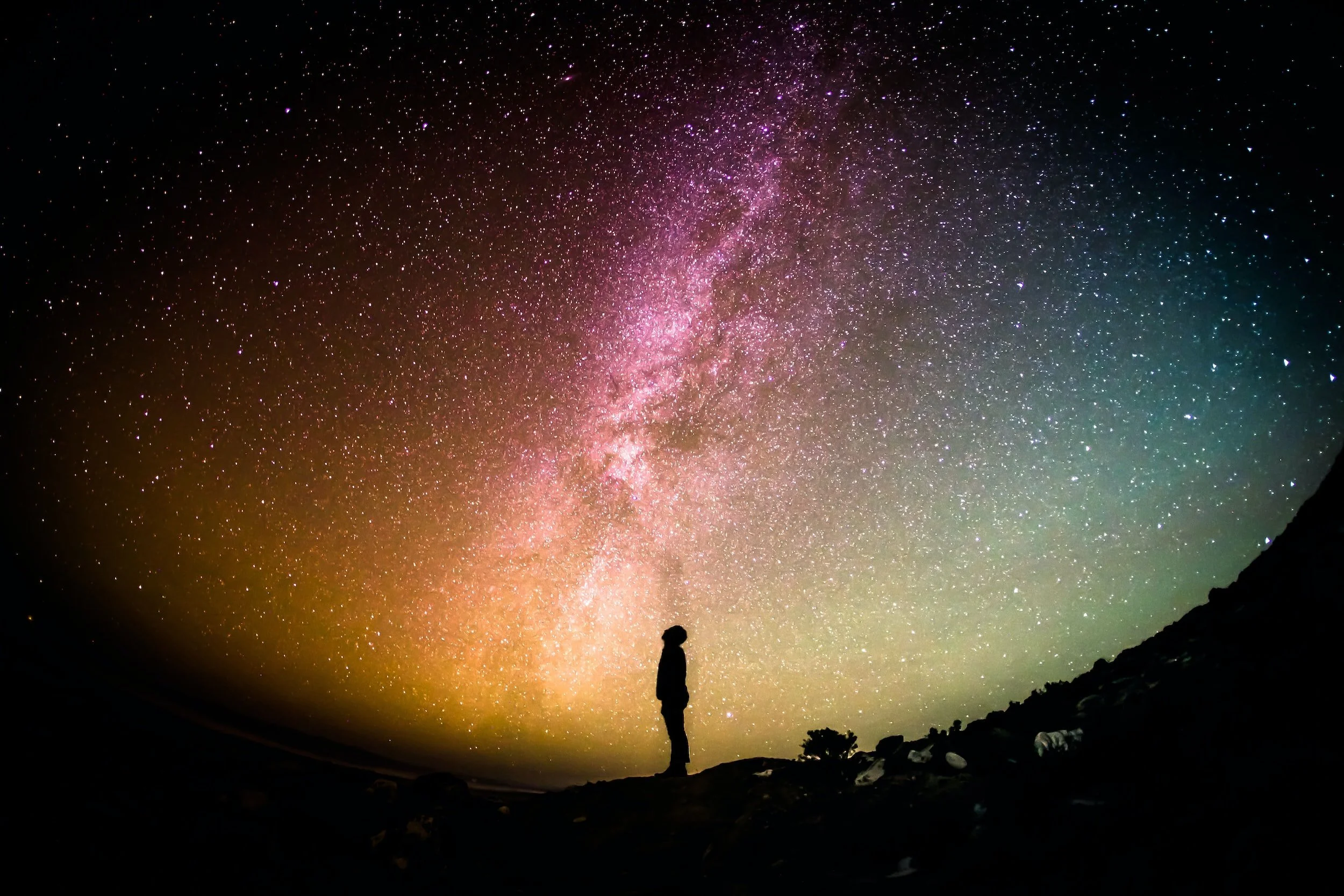Transcendental Meditation & The Genius Lounge ... with Bob Roth
This is a transcription from Mark's Ancient Wisdom from Modern Health Podcast. Original PODCAST Available Here (Scroll to Episode #45)
Hi everyone, and welcome to what I think is going to be an absolutely fascinating look into everything meditation, consciousness and transcendence. As well as looking at a very simple, practical technique that anyone can use to really enliven their full creative intelligence.
To do this I have not only a very dear friend of mine, but one person who I believe is one of the greatest human beings on the planet. His name is Bob Roth and he's been a Transcendental Meditation or TM teacher for about 45 years. He's taught everyone from prisoners, to drug addicts, to children, to everyday mums and dads right through to senior executives at Fortune 500 companies.
Top lawyers, bankers, government ministers and many high-profile individuals today including Hugh Jackman, Katy Perry, Lady Gaga, Arianna Huffington and Ray Dalio; consider him their personal meditation mentor in many ways. He's a New York Times bestselling author of his wonderful book, Strength In Stillness: The Power of Transcendental Meditation.
Probably the best thing about Bob is his heart. For the last 15 years he's headed up the David Lynch Foundation, which is an international organization. A charity that raises funds to teach Transcendental Meditation, for free, to disadvantaged and at-risk populations. War veterans, domestic violence sufferers any one suffering severe trauma.
Bob Roth: It’s wonderful to be here Mark. I’m talking to you from New York City looking out over the East River, and there's not many people out there. So, it's great to connect, it’s certainly very strange times.
Mark Bunn: Bob, I'd really love to go back 45-50 years. Today most people understand some form of meditation or they practice. Way back then meditation was very rarely heard of and even considered somewhat weird. Can you take us back to how you got into meditation yourself, personally and then became a teacher?
BR: If you looked at me as a 15 year old or an 18, 16, 17 year old kid; you'd never say, that guy's going to be a meditation teacher. I was very interested in politics. I had worked for Senator Bobby Kennedy's presidential campaign back in 1968. I saw him speak in San Francisco a few days before he was assassinated. It was quite devastating to me. I wanted to make change in the world. Those days we all wanted to change the world.
I resolved at the time Mark, that I would go to law school and become a U.S senator like Bobby Kennedy. It took me about a month in Catholic University in fall of 1968 to realize I was never gonna heal the soul of the nation. My mom was a school teacher. I thought how about if I write educational curriculum and give tools to kids that they could have from kindergarten that could help them navigate the world.
So, I'm going to school full-time, working full-time, there's riots in the streets; similar to now. I was pretty stressed and also a really skeptical person. I wasn't into New Age stuff. A friend of mine was doing something called TM. There was something down-to-earth about him, so I tried it. I said, okay I'll try it, if I don't like it I'll quit. The first meditation was so relaxing physically, so relaxing and so easy to do. I remember one of my first thoughts afterwards was,"That's what I want to teach kids, this meditation." So that's how I started it.
Meeting Maharishi Mahesh Yogi
MB: Beautiful! The founder of TM, Maharishi Mahesh Yogi, is someone you had a bit of dealings with back in the day. I think people like me and many others of my generation are fascinated by that contact. Can you give us a bit of an insight into some of your dealings with him?
BR: Obviously, an enlightened individual; we aspire to that sort of state of consciousness, but it's a long way away.
MB: It must have been fascinating to deal with him over many years?
BR: Yes, I had the very good fortune to meet Maharishi in 1970. He was teaching a graduate level, month-long course, in residence at a university in Northern California; on the science of consciousness. His background was physics. He trained in classic traditional physics in India, studying with some of the best physicists.
Then he had an opportunity to study with the greatest scientist of consciousness; the greatest scientist of meditation, for 13 years. Maharishi brought to the world, science and consciousness. So, he was hosting and basically leading this month-long course. We had Nobel Laureates sitting on one side of Maharishi and we had religious leaders on the other side of Maharishi and there was such a simplicity, a power, an energy and a purity to him; he had a naturalness to him. All the religious leaders and all the top physicists just were united because of his authenticity.
That was my first experience with him. Then I became a TM teacher and stayed 5 months with him, and thousands of other people in Italy. Then over the years Mark, I had a chance to spend time here and there with him; not as much as many people, but very fortunate. I've often tried to think, what was it like you say; well, he was like a grandfather, but he wasn't like my grandfather, and he was a great meditation teacher and wisdom beyond compare. Every moment with him was extraordinary. He passed away in 2008.
A month or two beforehand, I was hosting a reporter from Agence France Presse, who was in Holland where Maharishi was staying and he was going to do a big feature story on Maharishi. The reporter said to Maharishi: "What will Maharishi be remembered for? What is the greatness of Maharishi?" and he said, it's so great he said, "It's not mine, this knowledge that I'm saying. Right now at this window in time it’s not Maharishi this and Maharishi that; it’s the same knowledge that's been passed along for thousands and thousands and thousands of years. One time it's taught in this language and that vocabulary, and another time it's taught in that language and that vocabulary.
It's the eternity of the knowledge and the universality of the knowledge that transcends all religion. That transcends all philosophy. That is accessible to people of all races and religions and gender."
MB: Beautiful. I love the way you mentioned this merging of science and consciousness, which Maharishi brought and I think that's so relevant today. As I said, many people meditate. Today, when we talk about meditation it's everywhere, but there's often a blending, people can go for a walk down the beach or listen to music and that's their meditation.
The Science Behind Different Types of Meditation
The beauty of science, and I know this is something you've looked into deeply and talked about in your book; is that now from neuroscience we have an understanding of different types of meditation and the different effects they have.
Could you really go into that and outline what these different types of meditation are and what science is telling us are the differences between them?
BR: I’d love to, that’s a great question. What I love to do when I talk about meditation and science and the mind, I like to use an analogy.
The analogy is: you're on a little boat, just a little boat and you're in the middle of the ocean. All of a sudden you get these giant 30, 40, 50 foot high waves; huge waves and you could think, "Oh my gosh this is the whole ocean.” The whole ocean is an exaggeration, because if you do a cross-section of the ocean, you realize the ocean is miles deep and it’s the surface of the ocean 30, 40, 50 feet that's turbulent. By its nature it’s turbulent on the surface, but by its nature the depth of the ocean is pretty darn silent; that’s analogous to the mind.
The surface of our mind is the active, thinking, wavy tsunami mind. Some people call it the monkey mind. I like to call it the gotta, gotta, gotta, gotta, gotta mind. I got to do this and I got to do that, I got to call him and I got to call her and make a list, I gotta find a list, I got to slow down.
We all have that so it's a natural human desire to say, "I'd like to have some inner calm, some inner clarity, some inner focus, some inner equanimity," and the operative word there is “inner”.
The question is: is there such a thing as an inner? And if so how do we get there?
To answer your question Mark, this enters the realm of meditation. For thousands of years the word meditation has been associated with power, bliss, creativity, focus, equanimity; all these wonderful descriptions of a meditator’s mind. We think all meditations are the same; if you walk on the beach it's the same, if you do a headspace app it's the same, if you do a transcendental meditation or mindfulness. It turns out they're not the same. It turns out we know this based on brain science.
I'm gonna talk about three basic types of meditation and what they know from brain science. They know from brain science that every discrete experience changes the brain in a discrete way. If you listen to classical music it has one effect on your brain, if you listen to heavy metal music it has another effect; if you watch a romantic comedy it has one effect, if you watch a David Lynch film, that's another. It has different effects on the brain. So, they said, "Okay let's get all these different people doing all this different meditation and let's see what effect it has. Well, as I said, all the meditations; three basic types and it's based on what you actually do when you're meditating, the mechanics.
The first is called focused attention. Focused attention is your classic, Hollywood or end of yoga class meditation. You sit cross-legged and you're supposed to clear your mind of thoughts. The perspective on that is going back to the ocean analogy. What's a disruptor of a calm ocean?
Stop your waves, you have a calm ocean. If you want to have a calm mind, you wanna have a calm mind. What’s a disruptor of a calm mind? Thoughts. Stop your thoughts and you'll have a calm mind; very difficult to do. Concentrate on a thought, clear your mind of thoughts, but when you do that it creates something called gamma brain waves, which are 20-50 cycles per second; that’s when your brain is working very hard.
Second approach is mindfulness meditation and is part of something called open monitoring. Open monitoring says, thoughts are not necessarily the disruptor of calm, but the content of thoughts can be the disruptor of calm. Open monitoring teaches one to dispassionately observe all my thoughts, my moods, my feelings, even my behaviors; be in the present.
In that experience of now, there's a degree of equanimity. And there are about 50 different mindfulness techniques, but when we do that it creates something called theta brainwaves. Theta brainwaves are 4-8 cycles per second and that's when you're thinking deeply. It's pre-onset dream, but when you're thinking deeply about something; that’s when you see someone and they're lost in thought or you see someone and you don't want to disturb them. There's almost a quiet around them as opposed to just someone who’s daydreaming.
The reason we look to meditation these days is for very serious reasons. This isn’t hippie dippie, New Age stuff. We're interested in meditation because we have some high anxiety levels or a loved one in our family does not sleep well, or we feel depressed, we have issues with substance use disorder. So when we look to meditation now, we want to be sure we're doing something worthwhile.
Third thing is called self-transcending. Going back to the ocean analogy: we know that an ocean has silence at its depth. In self-transcending, and that includes Transcendental Meditation, we have the understanding that there is a vertical dimension to the mind. We feel: we’re just not thoughts, we feel things deeply, we love deeply, we hurt deeply, we have intuition.
In self-transcending we hypothesize that far deeper than even that, deep within every human being right now, is a level where your mind is already perfectly settled and calm and wide-awake. The ancient texts call that pure consciousness or transcendental consciousness. Scientists call it the state of restful alertness. I like to just call it a really quiet area of me.
Transcendental meditation gives effortless access to that; it allows your active thinking mind to be drawn inward and experiences deeper, quieter levels of the mind. When that happens, a complete constellation of changes take place in your brain, your nervous system and in your body. Your body gains a state of rest deeper than sleep, in many regards. There's a 30-40% reduction in cortisol levels, which is your stress hormone. A good night's sleep drops cortisol by 5%-7% and the electrical activity in the brain goes to something called alpha-1 which is 8-10 cycles per second and that's when your mind is settled and wide awake.
MB: The other beautiful point you only briefly touched on there was effortlessness. I'm sure you've had thousands of people over your career, that when you first taught them about meditation they say something like, "Oh, I can't sit still long enough, I don't have the discipline to meditate." I think the beauty for anyone who has learned Transcendental Meditation is that effortlessness.
Can you explain how something so profound can actually be truly effortless? It doesn't make sense to a lot of people who haven't experienced it.
BR: I spend most of my time teaching inner-city school kids or veterans, but I was giving a talk on Wall Street. I said this is effortless and it takes about an hour a day over 4 consecutive days to learn it. A banker raised his hand and said, "If this is so effortless, why does it take four days to learn?" I said, "We're New Yorkers, we don't even know what the word effortless means anymore." We get up in the morning no matter where we live, and we’re pushing. We push to get the kids out the door, we push to get to work. I explained to him how we go from here to here; without any effort whatsoever.
I'll give you 2 examples that have nothing to do with TM and then I'll tie it back to TM. You're sitting at home one evening, you’re in your study and you're doing some mindless paperwork; you're catching up on bills or something like that. All of a sudden in the other room, some of the most extraordinary music you have ever heard in your life comes on. Where does your attention go? Turn that up, push these bills away, that is unbelievable. You have two books to read and one book is a travesty that it was ever published, you can't read a word it's so bad. The other book is phenomenal, we've all had the experience, hours fly by. So what are those two things? Your attention is drawn to that music or your attention absorbed in the book?
Transcendental Meditation (TM)
This is the key to transcendental meditation, the key understanding of how it works. What we understand is, given the opportunity, the mind will always be drawn to something more satisfying. Is it tough to watch a great movie? No, it's easy. Is it hard to watch a bad movie? Very. The mind is naturally drawn to happiness, pleasure, beauty, fragrance, deliciousness. In Transcendental Meditation we set up the conditions so the attention of the mind can turn within. In that same ocean analogy; without any effort your active thinking mind is drawn inward. Why? Deeper, quieter levels of each one of us are increasingly more satisfying. It's like teaching a child how to dive. You say, “Honey, just take the correct angle and gravity takes over."
In TM we learn how to set up the conditions for the tension to take an inward direction so the mind is drawn inward. For that to happen, your teacher, (certified teacher) will give you what's called a mantra. Which is a word or a sound. It's a thought you think/say silently.
That has no meaning associated with it and it's a nice sound, it's a good sound, it's supportive. The mantra is thousands and thousands of years old. Your teacher will give you a mantra and then over the period of 4 days, teach you how to use it as a vehicle, as a catalyst, as a facilitator; for the attention of the mind to be drawn inward. As I say, it’s 100% effortless.
A ten-year-old child with ADD (Attention Deficit Disorder) who couldn't close his eyes for half a minute, can meditate and enjoy stillness.
MB: I think one of the beauties of it is that anyone can do it. You referenced New York bankers: we've touched on those wit high anxiety, mental health issues, insomnia; to name a few. There are many people listening who consider themselves high achievers. With your experience in dealing with so many of this type of people over years: how does TM practically fit into their busy lifestyle and maybe give them an edge in terms of what they do to maintain that performance?
BR: Well, you’re a great athlete and when you get to a level of physical prowess, it’s a mental game. Five people all have equal abilities, who handles it under pressure? Who's got the ability to be in the zone? Who has the peripheral vision? The thing about Transcendental Meditation is it wakes up what they call the creative networks within the brain. In business we need resilience. I work with a lot of entrepreneurs at the highest level in business, you need innovation, problem-solving ability, judgment, planning, decision-making. You have to be crisp and clear and awake all the time, in the work day. When it's time to go to sleep, you need to go to sleep. If something happens that’s upsetting or tumultuous in the morning, you can't have that carry with you through all your interactions throughout the day. You have to reset and move on to the next thing.
There are two different things Transcendental Meditation does. The brain research shows us that there's a part of the brain called the prefrontal cortex, which is the size of your fist and it's right behind your forehead. This is the CEO of your brain, this is executive functioning. This is the part of the brain you use when you make decisions, when you have to make judgments, when you have to plan ahead. Your own sense of self, that's here.
Stress takes this part and fatigue takes this part of the brain offline. Does a stressed person at work make good decisions? Have good judgment? No.
When the prefrontal cortex is offline what takes over is the amygdala. The amygdala is two almond-sized, neuronal networks. That is the fire alarm, all of your energy goes to alert and you lose nuance, you’re just reacting; fight-or-flight. That is a disaster for anybody who's got the world on their shoulders or any parent who has responsibility for children or any of us, really.
What Transcendental Meditation does is it calms the amygdala and it brings the prefrontal cortex back online, brings the CEO of your brain back online. That is priceless, indispensable and nothing else does that.
I’d like to say one other thing about creativity. Here's an interesting point. Everything these days is about innovation, creativity; that's the future.
The creative process is not just good ideas. The creative process is a good idea and the ability to make it happen, the ability to focus, the ability to see things through. They used to think, (and we all grew up with this), that there are two hemispheres to the brain and if you're a creative person you’re a right hemisphere person. If you're a left hemisphere person, you're the number cruncher, you're the accountant, you're the scientist. Well, it turns out that's not true.
Creativity is the product of networks within the brain, communication within the brain. There are two main networks. The first is called the executive control network. It's located within the prefrontal cortex. You have an idea for a book, you write it; you have an idea for a business plan, you write it. That's the focus and that's where your brain is working hard. Brain researchers wanted to know, what's your brain doing when it’s resting? When is not working hard?
What does it default to? They came up with a really great name for it; they called it the “default mode network”. It's actually a combination of three networks; back of the brain, middle of the brain, front of the brain communication. It's when your brain is not focused on anything, it’s just awake.
The Genius Lounge
The brain scientists at first were very dismissive of the “default mode network”. They said, that's just your lazy brain, that's your wandering brain, nothing good is coming of it. They have two new names for this part of the brain. The first is the “imagination network” and the second is the “genius lounge”
You can google it: default mode network and genius lounge. You're trying to figure out a problem; you’re in front of your computer and you’re stuck . Then you take a hot shower. Where did that idea come from? You go for a walk. Where did that idea come from? It's when your brain rests.
It's still humming along, but rests. That's where the nonlinear, profoundly creative, ideas come from that you need; not only to start a company, but to stay ahead. Not only to get to the top, but stay at the top.
They did a study on 200 of what they considered the most creative people in the world: conductors, mathematicians, architects and they looked at their brains. Their brains are hard-wired differently than most of us. In their brains there's no wall between the genius lounge and the executive control. There’s a free flow of communication that's not disruptive, but a free flow of communication.
Ray Dalio, who's at the top of his game in finance has been meditating 50 years. Jerry Seinfeld-meditating 50 years, Howard Stern-meditating 50 years, Paul McCartney writing- 50 years; big, creative minds.
TM wakes up both networks at the same time. There's something called neuroplasticity; that’s when the neurons, or brain cells, fire together in meditation for this amazing connectivity. They wire together out of meditation and create new neural pathways for peak creative experiences all the time. To answer your question; this is absolutely essential to get rid of the stresses that inevitably build up when you feel enormous pressure. It's not just some relaxation technique, it does something extraordinary to the brain that is essential as we move forward in life today.
MB: I think talking about peak experiences is a beautiful way to finish the conversation. What's the best next step for people who are interested in learning TM or who may be wanting to get back to a regular practice?
BR: They can go to tm.org or tm.org/au or tm.org.au in New Zealand Find out more information, arrange to talk to a teacher.
Helpful Resource = Bob Roth's New York Times Best-selling Book - Strength in Stillness - The Power of Transcendental Meditation.
I say this all the time; there are 1440 minutes in our day, if someone says to me, “I don't have the time to meditate”, I say, nobody has 20 or 40 minutes that they’re doing nothing, we’re all busy. How much time do we waste either online or with inefficiency? We're talking out of 1440 minutes about 40 minutes; 20 minutes in the morning, 20 minutes in the afternoon. 20 minutes in the morning before anyone gets up. You’re sleeping better, so you’re getting up earlier.
20 minutes in the afternoon you either schedule it in at work or you do it at home; do the best you can. It is such a return on investment, it's such a game-changer. I should say the TM organization in New Zealand, in Australia and all over the world is a nonprofit organization. The teachers that you have in these countries are the best in the world and I'm an American.
It's not a luxury, this is something that is becoming an essential tool. When we think about being healthy and peak performance; we've been thinking about what we do from the neck down, exercise, eat properly. In Transcendental Meditation you have a simple, natural, effortless tool and you have world-class mentors, teachers, coaches, TM coaches, mentors, teachers to instruct you on how to use it to meditate properly. You learn and you have it available for the rest of your life.
ARTICLE WRITTEN BY MARK BUNN
Mark Bunn is the Founder of Dharmic Living and author of the three-time best-selling ‘Ancient Wisdom for Modern Health‘.
Featured Articles
Topics
- Alcohol 1
- Allergies 1
- AntiInflammatory 2
- Arthritis 1
- Asthma 1
- Atkins 1
- Autumn 1
- Ayurveda 22
- Ayurvedic Medicine 12
- Ayurvedic Science 2
- Bad Breath 1
- Beer 1
- Blood Sugar 1
- Bob Roth 1
- Body Odour 1
- Breakfast 2
- Breathing 1
- Business 2
- Butter 1
- Caffeine 1
- Cancer 6
- Carbohydrates 2
- Cataracts 1
- Charcoal Water 1
- Cholesterol 3
- Coffee 1
- Cold & Flu 1
- Cooking 1
- DR JR Raju 2
- Daily Cycles 2
- Dehydration 2
- Dental 3
- Detox Drinks 1
- Diabetes 1
- Diet & Nutrition 44
- Dieting 2
- Digestion 9
- Direction 1
- Disease 1
- EMF 1
- Earthing 2
- Eastern Medicine 1
- Eating 1
- Eating Out 1
- Exercise 9
- Eye Health 1
- Fish Oil 1
- Flaxseed 1
- Food Quality 2
- Forest Bathing 1




































